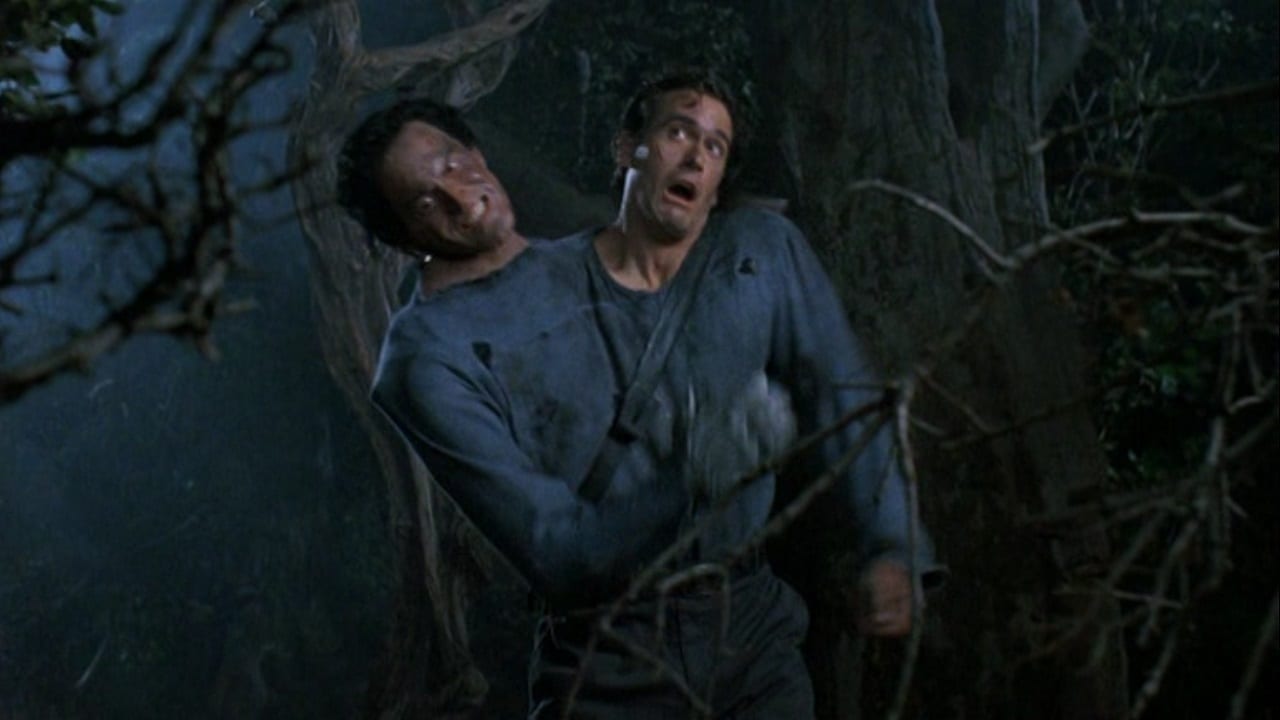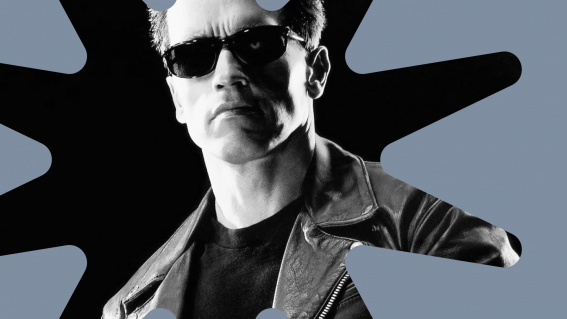Retrospective: Army of Darkness was the goofy end of Evil Dead, and the beginning of Ash

Alright you primitive screwheads, listen up: it’s the 30th anniversary of Army of Darkness. Eliza Janssen reckons it’s the first time we properly met Bruce Campbell’s snarky, Bugs Bunny-esque horror hero Ash as we know and love him today.
In the 2010s sequel series Ash Vs. Evil Dead, Bruce Campbell plays his Evil Dead hero as an ego-fuelled buffoon: he wears a girdle, chases women young enough to be his offspring, still takes pride in his minimum-wage job at the S-Mart well into middle age, and can still mash a Deadite into litres of chunky red mist like nobody’s business.
Thing is, Ash wasn’t always a loveable asshole. In the first two of Sam Raimi’s Evil Dead films, he’s kind of a blank slate, a lanky everyman. Especially in the character’s 1981 debut, where you could even argue he’s only the hero once our Decoy Protagonist, his more macho buddy Scott, gets mortally wounded by evil trees.
He was always funny, with that perfect, rubbery talent for Tex Avery-esque physical performance director Raimi had been searching for since his Looney Tunes-watching childhood. But Ash would only really become that characterful, boomstick-wielding blowhard in the original Evil Dead franchise’s 1992 conclusion, Army of Darkness.
After practically reshooting much of The Evil Dead for Evil Dead 2, Raimi goes ahead and gives us a re-recap of the franchise’s events thus far in Army of Darkness’s played-straight fantasy intro. “My name is Ash”, Campbell intones, “and I’m a slave”, trapped in 1300s England after some time-space shenanigans. One of the trilogy-ender’s greatest shots is in fact a repeated moment from the coda of Evil Dead 2, of Ash and his beloved Oldsmobile falling from the sky, landing on the ground with the same simultaneous thud—that car’s really been through hell, and it’s a shame to never see it in the movie again.
The stakes and scares were nerve-shredding in the first Evil Dead films, but here, watching Ash get bashed by disgruntled peasants before blowing away a pit-bound Deadite with relative ease is just hilarious. The guy knows what he’s doing now (somewhat), and his personality’s changed to show it, too. Campbell mostly screams and mugs in Evil Dead 2, and the iconic lines he does drop (“….groovy”) clearly paved the way for a much smarmier confidence to take over from his fraidy-cat origins.
He’s quickly hitched with another paper-thin love interest after his ex Linda was decapitated and, perhaps more painfully, recast multiple times across the other films. The anachronistically-named Sheila (Embeth Davidtz) bears the brunt of Ash’s newfound douche power: when she implores him to live up to his post-coitus promise of protecting her people from a Deadite invasion, he whines back, “well that’s just what we call pillow talk, baby!”

It’s a bold move to drag one’s franchise out of the cabin and into the far more expensive world of costumey swords-and-spells big screen fantasy. Admirable, for sure, but Raimi and co do lose a little something special in their expansive thinking. I can’t claim that any of Army of Darkness is at all scary. What initially made the Deadites horrifying was their glee for human suffering: they don’t just want to kill you, they want you quivering and hopeless, losing your mind as they cackle out of the mouths of your corrupted loved ones.
For better or worse, Army of Darkness casts us as the cacklers. It’s way more Three Stooges than the hokily self-serious action-fantasy of, say, the following year’s Conan the Barbarian, or the well-earned wonder of the Ray Harryhausen animations the movie apes.
Some hardcore horror fans must have certainly been left cold by the film’s middle act, a practical and digital craft showcase where the greatest effect is Campbell’s sheer commitment to clownery. In quick succession, he’s knocked around by Lilliputian versions of himself, an Evil Ash that grows out of his shoulder and into a Witch-King-esque Big Bad, and weenie slap-happy skeleton hands. The movie struggles to pick up steam for its big castle-siege climax after this, not dwelling on the conflict of Ash’s self-absorbed mission to get back to S-Mart with any real dramatic clout.

But man, is it funny to see a skeleton get merked by an exploding arrow, his death scream sounding like nothing more than a suburban dad stubbing his toe. By leaving that cabin for a broader landscape and much bigger budget, Raimi got to flex the action storytelling muscles he’d already proven with Darkman, and would peak at with the Spider-Man trilogy.
The abrupt final action scene was a post-production order from Universal Studios, and I gotta say that the brainless studio fat-cats made the right call this time. Raimi had originally planned for Ash to overdo his journey back to the present day, and to wake up in a post-apocalyptic future (“I slept too long!!”), but that was vetoed in favour of a happy ending: Ash consolidated as horror’s smirking, hyper-capable, human butt chin. He gets the gun, a new nameless girl, and a Comic-Con-ready punchline (“hail to the king, baby”).
A bit of everything, much like Army of Darkness itself—the only horror sequel where you get a live-action cartoon revving up Monty Python’s Holy Grail with a fricking awesome chainsaw hand.
That film wasn’t released, it escaped! https://t.co/TxowQO2PJ2
— Bruce Campbell (@GroovyBruce) February 19, 2023
















